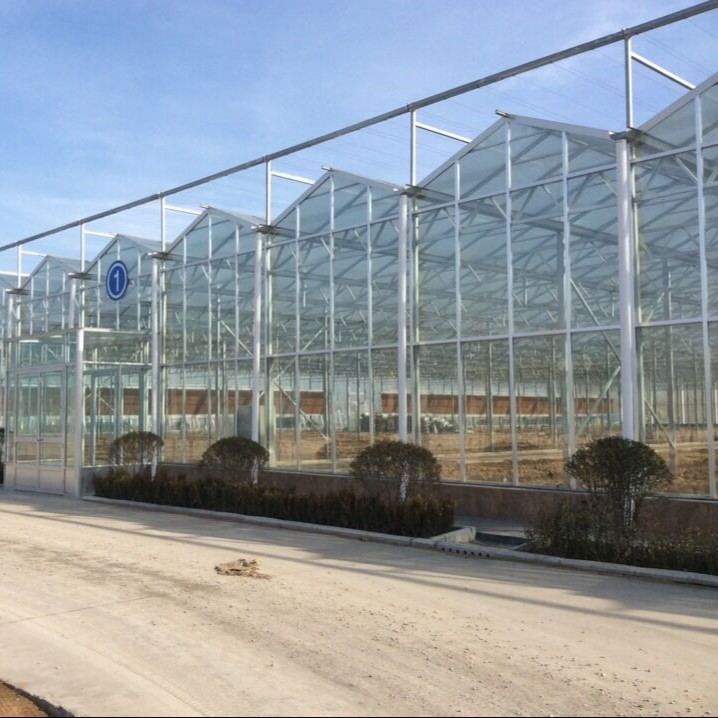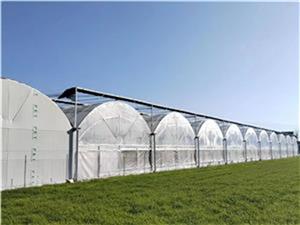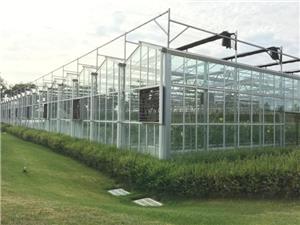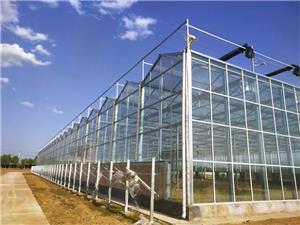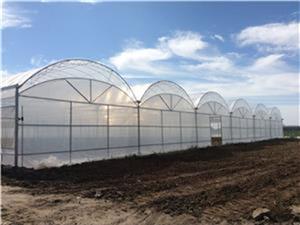How to Keep a Greenhouse Cool in Summer?
Why do greenhouses get extremely hot in summer?
The core reason for excessive heat in greenhouses during summer lies in the greenhouse effect. Sunlight can easily pass through the glass or plastic covering into the greenhouse, where it is then absorbed by the soil and plants, and re-released in the form of heat. However, unlike light, this heat cannot dissipate effectively; instead, it accumulates gradually indoors, causing a sharp rise in temperature.
Poor ventilation further exacerbates this problem: if a greenhouse lacks sufficient roof vents or side openings, hot air cannot escape and keeps piling up inside, creating a sweltering and harsh environment for plants. This discomfort becomes even more noticeable on windless summer days.
Additionally, high energy costs pose another major challenge. Although equipment like fans and air conditioners can cool the greenhouse quickly, the electricity fees required for continuous operation are often exorbitant, making them impractical for many growers. As a result, more and more people are turning to passive or low-energy cooling methods, which are not only practical but also enable sustainable greenhouse management in summer.
5 Electricity-Free Ways to Cool a Greenhouse
1. Shading: Block Excess Sunlight
Shading is one of the simplest and most effective cooling methods without electricity. By reducing the total amount of sunlight entering the greenhouse, it prevents excessive heat accumulation from the source.
Shade cloths: The most widely used shading tool, with shading rates ranging from 30% to 70%, which can be flexibly selected according to crop needs. For example, vegetables like tomatoes and cucumbers usually only require cloths with a 40%-50% shading rate; while crops or flowers sensitive to light may need a higher shading rate of 60%-70%.
Shading paints/white paints: Applying these paints on the greenhouse roof can effectively reflect sunlight and reduce heat intake. When the weather turns cool, the paints can be washed off to restore sufficient sunlight inside the greenhouse, enabling seasonal adjustment with "one coat and one wash".
2. Natural Ventilation: Facilitate Hot Air Escape
Natural ventilation is a key part of passive cooling. Hot air has the natural property of rising, and a reasonable vent design based on this principle can significantly improve the heat dissipation effect of the greenhouse.
Install roof vents to allow rising hot air to escape smoothly; at the same time, match them with side vents to bring in cooler fresh air from outside, creating air circulation.
When air flows in from one side of the greenhouse and out from the other, a "cross-ventilation" effect is created, greatly reducing heat accumulation. For optimal ventilation, the total area of the vents should be at least 15%-25% of the greenhouse floor area. Even without fans, this air flow design can lower the indoor temperature by several degrees, and the cooling effect will be more significant when combined with shading measures.
3. Evaporation: Use Water to Absorb Heat
When water evaporates, it absorbs heat from the surrounding environment, creating a natural cooling effect. Growers can utilize this physical property without electricity.
Watering the ground: Sprinkling water on the greenhouse floor or keeping it moist. The heat in the air will be taken away during the evaporation process, lowering the indoor temperature.
Placing open water containers: Put buckets, sinks, or shallow water tanks filled with water in the greenhouse. These containers not only increase air humidity but also buffer the drastic temperature fluctuations throughout the day. Although this method cannot achieve a large temperature drop, its cooling effect is still very obvious in small greenhouses.
4. Insulation and Reflection: Block Heat Inflow
To cool a greenhouse without relying on electricity, the key is to block heat from entering the interior at the source.
Install reflective materials such as aluminum foil curtains and insulation curtains on the greenhouse roof or walls to reduce heat intake by reflecting sunlight.
Some growers adopt a "double-layer covering" design: combining an outer shade cloth with an inner insulation curtain. This layered structure can not only effectively block heat from entering in summer but also reduce heat loss in cold seasons, improving energy efficiency.
Such materials can be reused for many years, making them a cost-effective and efficient cooling solution in the long run.
5. Passive Design and Plant Shading
The core of passive design is to use natural elements to regulate the greenhouse temperature, achieving cooling without additional equipment.
Using heat-storing materials: Place heat-storing materials like buckets, stones, or bricks in the greenhouse. These materials absorb excess heat during the day and release it slowly at night, helping to alleviate day-night temperature differences and stabilize the indoor temperature.
Plant shading: Grow tall crops such as corn and sunflowers around the greenhouse. These plants can block direct sunlight during the hottest hours of summer, reducing the solar radiation received by the greenhouse and thus lowering indoor heat stress, realizing natural cooling without equipment assistance.